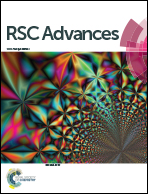Dielectrophoretic separation of platelet cells in a microfluidic channel and optimization with fuzzy logic
Abstract
It is the aim to develop optimization techniques to separate platelets from Red Blood Cells (RBCs) after designing and analyzing a microfluidic chip in this study. RBCs and platelets are present in the blood, but some healthcare applications require either platelets or RBCs. Therefore, it is necessary to separate platelets from RBCs. In this study, the design and analysis of the microfluidic chip were carried out with the Comsol Multiphysics program. Since the separation of platelets and RBCs in the blood flowing from a channel is provided by the Dielectrophoretic (DEP) force technique, the DEP force feature was given importance in the design of microfluidic channels. Much data was obtained while designing and analyzing processes. It has been observed that the voltage applied to the microfluidic channel and the inlet velocity of the blood affect the fluidic velocity and pressure along the microfluidic channel. It was also understood that the separation of platelets from RBCs depends on input data. Input and output data were analyzed in the Comsol Multiphysics program, and the optimization of the microfluidic chip was realized with the Matlab-Fuzzy Logic program. In order for the platelets to be separated from the RBCs, the optimum voltage to be applied to the microfluidic chip should be in the range of 4–6 V and the inlet velocity of the blood in the range of 800–900 μm s−1. When these input values are given, the maximum pressure affecting the microfluidic outlet channel is 10–12 Pa, and the maximum velocity is in the range of 1.25–1.5 mm s−1. These results are the optimum values required to separate platelets from RBCs.

- This article is part of the themed collection: Celebrating recent achievements in chemical science in Turkey


 Please wait while we load your content...
Please wait while we load your content...